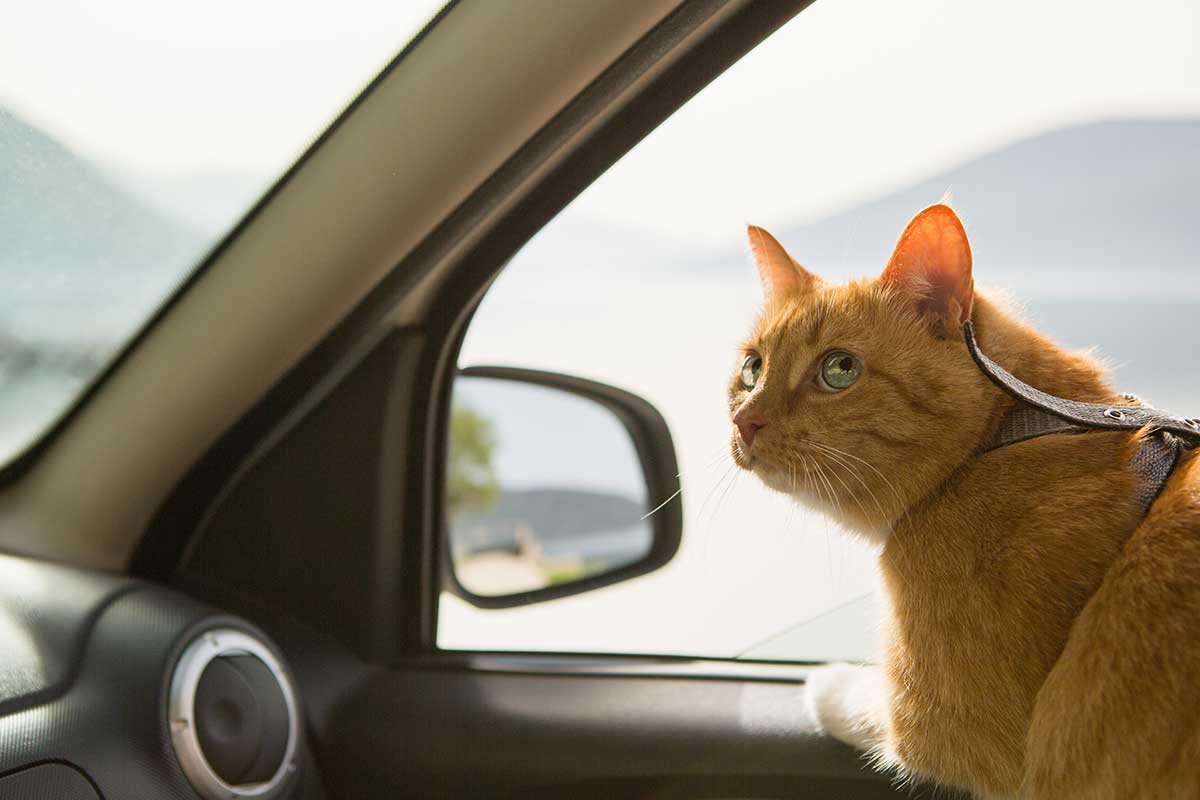In 2014, my husband and I moved cross-country from the Midwest to New England, a trip that involved transporting our five indoor housecats, a newly trapped feral cat, and our older dog. I planned ahead to try to ensure that this trip would be as stress-free as possible for the animals.
We had a successful trip and the animals took it well and with little stress. (It’s safe to say the animals endured less stress than the humans did on this trip.) Here are some of the strategies we used to make the move go as smoothly as possible.
Strategic Pet Distribution
My husband and I each drove a vehicle for this trip. The vehicles were well insulated and quiet and rode smoothly. We gave special consideration as to who would be in which car. Since the five indoor house cats were all used to each other and all got along, they rode in one car. The other car carried the dog (in a large and sturdy carrier of her own) and the newly-trapped feral cat.
Safe, Sturdy Spaces For Each Animal
All cat and dog carriers were sturdy, not soft. I worry about sudden shifting of carriers on such a long trip, and I didn’t want anyone getting injured. Additionally, the carriers provided all cats with their own “safe space.” Although a few of the cats probably would have been fine being paired up in a carrier, I wanted each cat to be able to move around if needed.
The hard carriers also worked well when we stopped at motels on the first and second nights of this trip. They allowed us to get the animals safely into the motel room without worrying about escape. The carriers provided a safe “cave” for the animals in unfamiliar motel rooms.
Special Consideration For The Feral Cat
The feral cat (now named Zorro) was a snag we had not planned for. He’d survived a fierce Minnesota winter prior to our move because we tempted him into the garage with food and a litter box. I couldn’t get near him, but my plan was to trap him prior to our move, have him neutered and vaccinated, and take him with us if it seemed he could be tamed. (If he didn’t seem tamable, a kind friend in Minnesota had offered to take him as a barn cat at her very nice petting farm.)
After he was trapped and neutered, I had the gut feeling that he could be tamed with time. Even though I could not get near him, we housed him for the duration of the trip in a very large dog carrier with litter box, food, and water. I covered the carrier completely for the trip, and Zorro spent the nights secure in the car. (The outdoor temperature was ideal at about 30 to 40 degrees Fahrenheit, since we moved in early spring.) We figured it would have stressed all the animals too much to bring a new feral cat into a crowded motel room, even in a covered cage.
Extending The Trip
We had previously done this trip in two very long days, but we decided to take three days to ease the stress on ourselves and on the animals. Instead of pushing through two 15-hour days, we took our time. During the drive, we stopped frequently to check on the animals and talk to them in calm and encouraging voices.
Calming Supplements
Prior to the trip, I asked my veterinarian for suggestions on how to make the move go more smoothly. For our particular animal family, she suggested using Feliway spray in the cars and giving chewable “Composure” supplements (canine and feline varieties) by VetriScience. These seemed to work. No one was sick during the entire ride, and there was only one early incident of a cat accidentally pooping in his carrier. The cats are fairly good riders, and as the ride went on, they quieted down and seemed to relax. Your veterinarian can make appropriate suggestions for your particular cat.
Adapting Feeding Schedules
Although I usually feed my cats once in the morning and once in the evening, I fed them only in the evening on this trip. I reasoned that they’d ride better with a lighter stomach, and they’d have time to digest their food if fed at night. It seemed to work.
Monitoring Our Own Stress
Although we were stressed by the immensity of the move (new environment, new roads, new life), we took care to try and be calm around the animals so they’d not pick up on our stress.
Did it work? At the end of the drive, I was immensely grateful for an event-free transport of seven animals. With some planning, and taking into consideration the personalities of your animals, you will increase the chance of a successful, fear-free move with your own cats.
This article was reviewed/edited by board-certified veterinary behaviorist Dr. Kenneth Martin and/or veterinary technician specialist in behavior Debbie Martin, LVT.
Catherine Holm is the award-winning author of cat fantasy fiction and cat-themed memoir. She lives in Vermont with her husband and five well-loved cats. Learn about her work at www.catherineholm.com.








